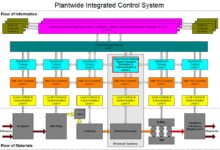System Integration: 7 Powerful Strategies for Seamless Success
In today’s hyper-connected digital world, system integration isn’t just a tech buzzword—it’s a business imperative. From startups to Fortune 500s, organizations rely on seamless data flow across platforms to stay agile, efficient, and competitive. Let’s dive into what makes system integration a game-changer.
What Is System Integration and Why It Matters

System integration refers to the process of connecting different IT systems, software applications, and technologies within an organization so they function as a unified whole. Instead of operating in isolated silos, integrated systems share data and processes in real time, enabling better decision-making, improved efficiency, and enhanced customer experiences.
This is especially critical in an era where businesses use multiple platforms—CRM, ERP, HRM, e-commerce, and more. Without proper integration, data becomes fragmented, workflows slow down, and errors increase. System integration bridges these gaps, creating a cohesive digital ecosystem.
The Evolution of System Integration
System integration has evolved significantly over the decades. In the 1980s and 1990s, integration was largely manual or point-to-point, involving custom scripts and direct database connections. These methods were fragile and hard to scale.
By the 2000s, the rise of Service-Oriented Architecture (SOA) introduced more modular and reusable services. This allowed systems to communicate via standardized protocols like SOAP and XML. Then came the cloud era, which revolutionized integration with APIs, microservices, and cloud-based integration platforms like MuleSoft and Dell Boomi.
Today, system integration is not just about connecting systems—it’s about enabling digital transformation. According to Gartner, organizations that invest in robust integration strategies are 30% more likely to achieve their digital transformation goals.
Key Benefits of System Integration
- Improved Operational Efficiency: Automated workflows reduce manual data entry and minimize errors.
- Real-Time Data Access: Decision-makers get up-to-date information across departments.
- Enhanced Customer Experience: Unified customer data allows for personalized interactions across channels.
- Scalability: Integrated systems can grow with the business, supporting new applications and users.
- Cost Savings: Reduces redundancy, lowers maintenance costs, and extends the life of legacy systems.
“Integration is not a project; it’s a continuous journey toward business agility.” — Forrester Research
Types of System Integration Approaches
There is no one-size-fits-all solution when it comes to system integration. Different business needs, architectures, and budgets call for different integration strategies. Here are the most common types:
Point-to-Point Integration
Also known as spaghetti integration, this approach involves direct connections between individual systems. For example, connecting your CRM directly to your email marketing tool.
While simple to set up for a few systems, this method becomes unmanageable as the number of systems grows. Each new connection requires custom development, leading to a tangled web of integrations that are hard to maintain.
According to IBM, point-to-point integration can increase maintenance costs by up to 40% in complex environments.
Vertical Integration (Silos-Based)
This method groups systems by function or department—such as finance, HR, or sales—into vertical silos. Each silo is integrated internally but remains isolated from others.
While this provides some level of integration within departments, it limits cross-functional collaboration. For example, the sales team might have full visibility into customer data, but the support team may not.
Vertical integration is often a stepping stone toward more comprehensive integration strategies, but it falls short of delivering enterprise-wide data unity.
Horizontal Integration (Enterprise Service Bus – ESB)
Horizontal integration uses a middleware platform—often called an Enterprise Service Bus (ESB)—to connect all systems through a single communication layer. This acts as a central hub that routes messages and data between applications.
ESB-based integration is highly scalable and reduces the complexity of managing multiple point-to-point connections. It supports real-time communication and is ideal for large enterprises with diverse IT landscapes.
Popular ESB solutions include Apache Camel, MuleSoft, and WSO2. These platforms offer robust security, monitoring, and transformation capabilities.
Star Integration (Spoke-Hub Model)
Similar to point-to-point but more structured, star integration connects all systems to a central application. This central system acts as the hub, managing all data exchanges.
It’s more maintainable than pure point-to-point but still poses risks—if the central hub fails, the entire integration network can collapse. It’s best suited for organizations with a dominant system, like a core ERP, that serves as the backbone.
Common Challenges in System Integration
Despite its benefits, system integration is not without challenges. Organizations often face technical, organizational, and strategic hurdles that can derail integration projects.
Data Inconsistency and Quality Issues
One of the biggest challenges is ensuring data consistency across systems. Different applications may use varying data formats, definitions, or update frequencies. For example, customer names might be stored as “John Doe” in one system and “Doe, John” in another.
Without proper data governance and transformation rules, these inconsistencies lead to inaccurate reporting and poor decision-making. Implementing data validation, normalization, and master data management (MDM) is crucial.
Legacy System Compatibility
Many organizations still rely on legacy systems—older software that may not support modern APIs or security protocols. Integrating these systems with cloud-based applications can be technically challenging and expensive.
Solutions include using integration middleware, building API wrappers, or gradually modernizing legacy systems through refactoring or replacement.
As noted by McKinsey, legacy modernization can reduce integration costs by up to 60% over five years.
Security and Compliance Risks
Connecting systems increases the attack surface for cyber threats. Sensitive data flowing between applications must be encrypted, access-controlled, and monitored.
Compliance with regulations like GDPR, HIPAA, or CCPA adds another layer of complexity. Integration solutions must include audit trails, consent management, and data residency controls.
Best practices include using OAuth for authentication, implementing end-to-end encryption, and conducting regular security audits.
Best Practices for Successful System Integration
To overcome challenges and maximize ROI, organizations should follow proven best practices when planning and executing system integration projects.
Define Clear Objectives and Scope
Start with a clear understanding of why you’re integrating systems. Is it to improve customer service? Streamline supply chain operations? Enable real-time analytics?
Define measurable goals—such as reducing order processing time by 30% or cutting data entry errors by 50%. A well-defined scope prevents scope creep and ensures alignment across teams.
Choose the Right Integration Architecture
Select an integration approach that fits your organization’s size, complexity, and future goals. Small businesses might benefit from API-led integration, while large enterprises may need an ESB or hybrid integration platform.
Consider factors like scalability, real-time requirements, and cloud vs. on-premise systems. A flexible architecture allows you to adapt as business needs evolve.
Invest in Integration Tools and Platforms
Leverage modern integration platforms that offer pre-built connectors, drag-and-drop workflows, and monitoring dashboards. Tools like MuleSoft, Dell Boomi, and Amazon API Gateway simplify development and reduce time-to-market.
These platforms also support hybrid integration—connecting cloud, on-premise, and SaaS applications—making them ideal for complex IT environments.
The Role of APIs in Modern System Integration
Application Programming Interfaces (APIs) have become the backbone of modern system integration. They enable systems to communicate securely and efficiently, often in real time.
What Are APIs and How Do They Work?
An API is a set of rules and protocols that allows one software application to interact with another. For example, when you book a flight on a travel website, it uses APIs to fetch real-time data from airline databases.
APIs can be public (open to external developers), partner (shared with specific business partners), or internal (used within the organization). REST and GraphQL are the most popular API styles due to their simplicity and flexibility.
API-First Integration Strategy
An API-first approach means designing APIs before building applications. This ensures that integration is built into the system from the start, rather than being an afterthought.
Organizations like Netflix and Amazon have adopted API-first strategies to scale their services globally. This approach promotes reusability, faster development, and better system interoperability.
“APIs are the new user interface for businesses.” — Kin Lane, API Evangelist
Managing API Lifecycles
Effective API management includes design, deployment, monitoring, versioning, and security. Tools like Apigee, AWS API Gateway, and Postman help organizations manage APIs at scale.
Key practices include rate limiting to prevent abuse, using API keys for authentication, and providing comprehensive documentation for developers.
System Integration in Cloud and Hybrid Environments
With the rise of cloud computing, system integration has shifted from on-premise-only models to hybrid and multi-cloud environments. This brings both opportunities and challenges.
Cloud-to-Cloud Integration
As more businesses adopt SaaS applications—like Salesforce, Workday, or Shopify—integrating these cloud services becomes essential. Cloud-to-cloud integration enables seamless data flow between platforms without the need for on-premise infrastructure.
Integration Platform as a Service (iPaaS) solutions like MuleSoft Anypoint Platform and Azure Logic Apps are designed for this purpose, offering pre-built connectors and automated workflows.
On-Premise to Cloud Integration
Many organizations operate in hybrid environments, where legacy on-premise systems must communicate with cloud applications. This requires secure, reliable integration methods that handle latency, data synchronization, and firewall restrictions.
Solutions include using secure gateways, virtual private clouds (VPCs), and hybrid integration platforms that support both cloud and on-premise deployments.
Multi-Cloud Integration Challenges
Using multiple cloud providers (e.g., AWS, Azure, Google Cloud) increases flexibility but complicates integration. Each cloud has its own services, APIs, and security models.
To manage this, organizations are adopting cloud-agnostic integration tools and adopting Kubernetes for container orchestration. Standardizing data formats and using API gateways help maintain consistency across clouds.
Future Trends in System Integration
The field of system integration is rapidly evolving, driven by advancements in AI, automation, and edge computing. Staying ahead of these trends is key to maintaining a competitive edge.
AI-Powered Integration
Artificial Intelligence is transforming integration by enabling intelligent data mapping, anomaly detection, and predictive analytics. AI can automatically suggest field mappings between systems or detect data quality issues before they impact operations.
For example, AI-driven integration platforms can learn from past integration patterns and optimize workflows over time. This reduces manual configuration and speeds up deployment.
Event-Driven Architecture (EDA)
Traditional integration often relies on request-response models. In contrast, event-driven architecture triggers actions based on real-time events—like a customer placing an order or a sensor detecting a temperature change.
EDA enables faster, more responsive systems. It’s widely used in IoT, real-time analytics, and microservices environments. Platforms like Apache Kafka and AWS EventBridge are leading the way in event-driven integration.
Low-Code and No-Code Integration
Low-code and no-code platforms are democratizing integration by allowing non-technical users to build integrations using visual interfaces. Tools like Zapier, Make (formerly Integromat), and Microsoft Power Automate enable business users to automate workflows without writing code.
While not suitable for complex enterprise integrations, these tools are ideal for departmental automation and rapid prototyping.
Real-World Examples of Successful System Integration
Understanding how real companies leverage system integration can provide valuable insights and inspiration.
Retail: Omnichannel Customer Experience
A global retailer integrated its e-commerce platform, POS systems, inventory management, and CRM to create a seamless omnichannel experience. Customers can now buy online and return in-store, check real-time inventory, and receive personalized offers based on purchase history.
This integration reduced stockouts by 25% and increased customer satisfaction scores by 30%.
Healthcare: Interoperable Patient Records
A hospital network implemented a system integration solution to connect electronic health records (EHR), lab systems, and billing software. This allowed doctors to access complete patient histories in real time, reducing duplicate tests and improving diagnosis accuracy.
The integration also ensured compliance with HIPAA by encrypting data in transit and at rest.
Manufacturing: Smart Factory Integration
An automotive manufacturer integrated IoT sensors on the factory floor with ERP and supply chain systems. Real-time data from machines is used to predict maintenance needs, optimize production schedules, and reduce downtime.
This predictive maintenance system reduced equipment failures by 40% and increased overall equipment effectiveness (OEE) by 18%.
What is system integration?
System integration is the process of connecting different IT systems and software applications so they work together as a unified system, enabling seamless data flow and coordinated operations across an organization.
Why is system integration important?
It improves operational efficiency, enhances data accuracy, enables real-time decision-making, and supports digital transformation by breaking down data silos and automating workflows.
What are the main types of system integration?
The main types include point-to-point, vertical, horizontal (ESB), and star integration. Modern approaches also include API-led and cloud-based integration using iPaaS platforms.
What are common challenges in system integration?
Key challenges include data inconsistency, legacy system compatibility, security risks, lack of skilled personnel, and managing integration complexity in hybrid or multi-cloud environments.
How do APIs support system integration?
APIs act as intermediaries that allow different systems to communicate securely and efficiently. They enable real-time data exchange, support microservices architectures, and are essential for cloud and mobile integrations.
System integration is no longer optional—it’s a strategic necessity for any organization aiming to thrive in the digital age. From eliminating data silos to enabling real-time analytics and automation, effective integration drives efficiency, innovation, and customer satisfaction. By understanding the types, challenges, and best practices of system integration—and leveraging modern tools like APIs, iPaaS, and AI—businesses can build agile, future-ready digital ecosystems. The journey may be complex, but the rewards are transformative.
Recommended for you 👇
Further Reading:









